Art History Term for Faux Marble Statue in Painting
Ancient sculptures reveal their truthful colors
The Greek and Roman Galleries at New York City's Metropolitan Museum of Art are a wonder of white marble, an amazing acre of it – world-famous, flooded with light, statues clean and gleaming. So, what's wrong with this picture?
"They would have all been painted," said Marco Leona, the Met'southward chief scientist.
Painted, not white? "So, this experience of light and whiteness isn't what the Romans and the Greeks would have experienced?" asked contributor Martha Teichner.
"No. In many ways, it'due south an accident of fourth dimension and nature, in many means it's an blow of estimation," Leona said.
Did you know that? Actually, the author of a 2018 commodity in The New Yorker, Margaret Talbot, knew.
- The myth of whiteness in classical sculpture (The New Yorker)
Nosotros were fascinated by her story, and set out to encounter for ourselves.
At the Met, Leona showed Teichner a marble capital letter and finial in the form of a sphinx, from the classical period of Greek culture: ""This comes from about 500 B.C.," he said. "You encounter the pattern on the chest. You come across the pilus. You will see feathers in the wings that are outlined in a night red, maybe blue paint."
The evidence is right there … if you just wait hard enough. The specks, Leona said, are "still the original color, which gives a sense of what she would have looked like."
The Met even has a vase showing an creative person painting a sculpture. "This is Exhibit A. It'south our photograph of the time," he said.
Now, wait at Michelangelo's Pieta, or his David: white marble masterpieces of the Renaissance, inspired by Greek and Roman sculpture. Why, past the 1500s, had white replaced colour?
Leona said, "The statue topples, is covered by rubble, you have soil accumulation. When the statues were and so found [during] the Renaissance, they would come out from the ground looking pretty dirty."
Teichner asked, "Did people actively scrub them to get the paint off once they started cleaning them?"
"Well-nigh certainly so."
"If sculptors like Michelangelo were inspired past the Greeks, by the Romans, why didn't they, too, paint their sculptures?"
"Because they never saw the paint on that sculpture," Leona replied.
They saw class, not color. Those scrubbed sculptures they mistakenly took for white inspired their belief that white equals dazzler, purity – a culturally-loaded concept that underpins Western fine art to this twenty-four hours.
"Information technology'due south at the cadre of how we remember near sculpture and its aesthetics," said University of Georgia art history professor Mark Abbe. "It'southward at the core of how we think nigh the body. It'south even at the core, I recall to some caste, of how nosotros think of ourselves."
Teichner asked, "Practise yous think that the notion of Western art, what nosotros empathise Western art to be, will change as more people are aware that its cornerstone wasn't every bit they thought it was?"
"Yep, I tin can't imagine it non changing," Abbe replied.
He uses technology to see what was missed – or conveniently disregarded – since the Renaissance. "It's a binocular microscope to look at really up close on the surface," he said. "Where yous and I might look at this and just encounter a white marble sculpture, you lot can actually make out traces of pigment."
He showed Teichner traces of the original pigment on marble busts of the Roman emperor Septimius, and his wife Julia (or Yulia in Latin), endemic by Indiana Academy. Looking at the cleaned-upward marble, you'd never know they didn't have stake, white faces. He was from Libya, she Syrian arab republic. How would the busts accept looked nearly ii,000 years ago?
There'south a clue: This painting. "A rare instance of a wooden panel that was painted with a depiction of the whole imperial family," Abbe said.
Their complexions reflected the ethnic and racial diversity of the Roman Empire, which stretched all the way from Uk to Asia Minor.
At the Met, using an electron microscope, Marco Leona tin can take the tiniest speck of pigment from a statue and analyze information technology. There are likewise vials containing bodily artists' pigments excavated from an archaeological site, dating from the 2nd century B.C.
So now: be prepared for a daze: Here'south what Greek and Roman statues really looked like – their true colors, or as close as anyone's gotten until at present, using all the science and technology out there.
For more than xxx years, German scholars Vinzenz Brinkmann and his wife, Ulrike Koch-Brinkmann, accept been creating and painting plaster replicas of classical marble statues.
"We used authentic, historic painting materials: earth pigments, mineral, tempera and linseed oil," said Brinkmann.
An exhibition of the Brinkmanns' piece of work, chosen "Gods in Colour," is traveling the world, and is now in Frankfurt, Germany.
"It was time to turn down a major misunderstanding by proving that European antiquity was not white, but colorful and diverse," Brinkmann said.
Teichner asked the Met's Leona, "Do art historians owe museum-goers an amends?"
"I don't think and then," he replied. "At that place's no fakery. There's no whitewashing."
"No? Really?"
"Absolutely."
If these statues look foreign to us now, Leona says, just imagine how these white sculptures would have looked to the ancient Greeks: "A completely white statue, to a Greek observer, would take looked like some shoddy effort, or but something that had not been finished."
The whitewashing may have been accidental, merely it nearly washed abroad the truth.
For more info:
- Greek and Roman Art at the Metropolitan Museum of Art, New York City
- Sidney and Lois Eskenazi Museum of Art, Indiana University Bloomington
- Exhibition: "Gods in Color – Golden Edition" at the Liebieghaus, Frankfurt, Germany (through September 26)
- "Gods in Colour" educational toolkit
- Mark Abbe, Lamar Dodd School of Fine art, University of Georgia, Athens, Ga.
Story produced by Jay Kernis. Editor: Steven Tyler.
Run across besides:
Thank you for reading CBS NEWS.
Create your gratuitous account or log in
for more features.
Source: https://www.cbsnews.com/news/ancient-greek-roman-sculptures-metropolitan-museum-art/
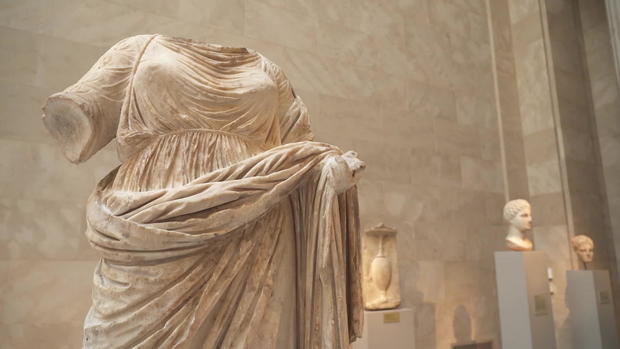
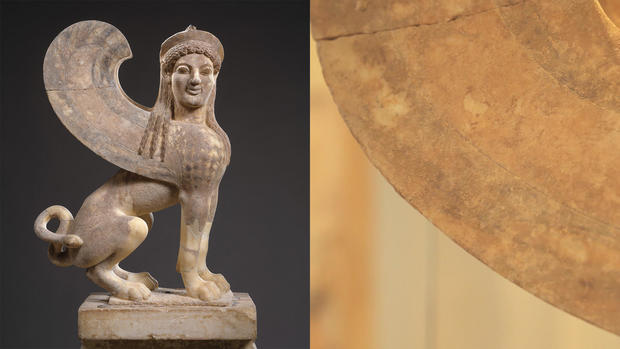
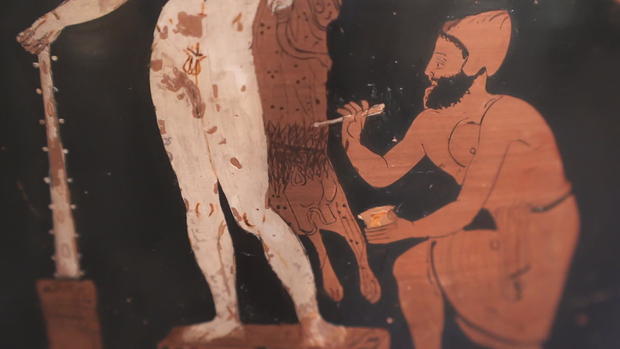
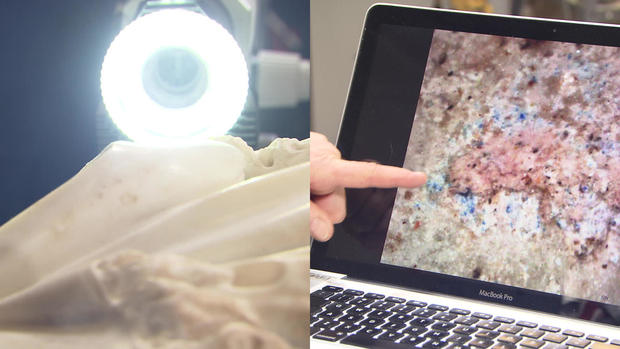
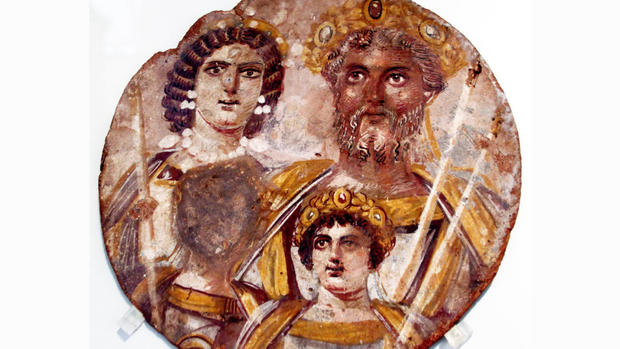
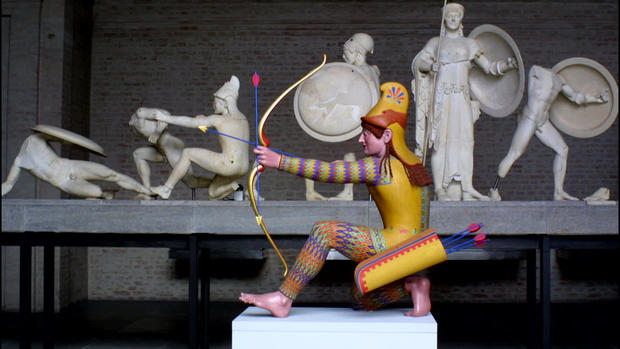
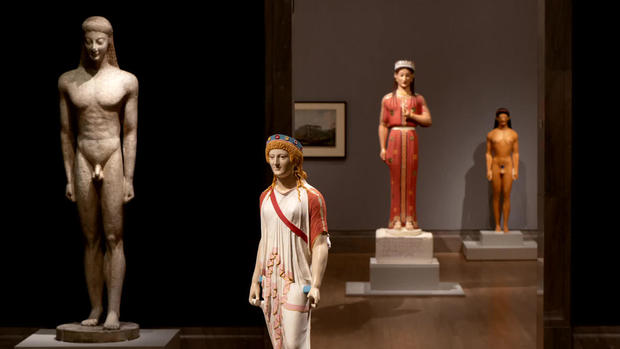
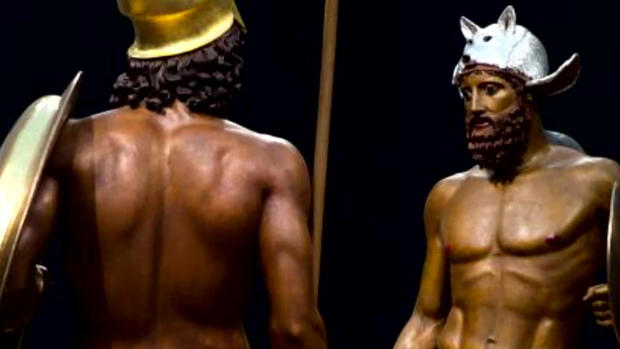
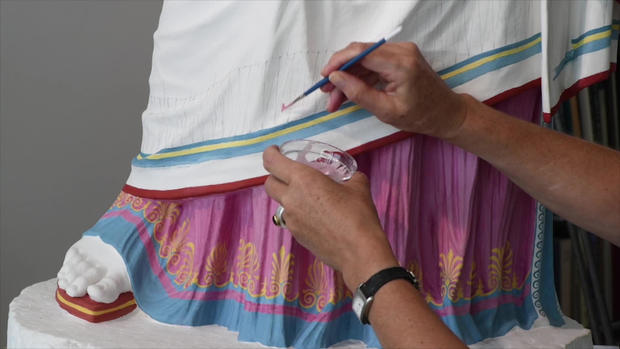
0 Response to "Art History Term for Faux Marble Statue in Painting"
Post a Comment